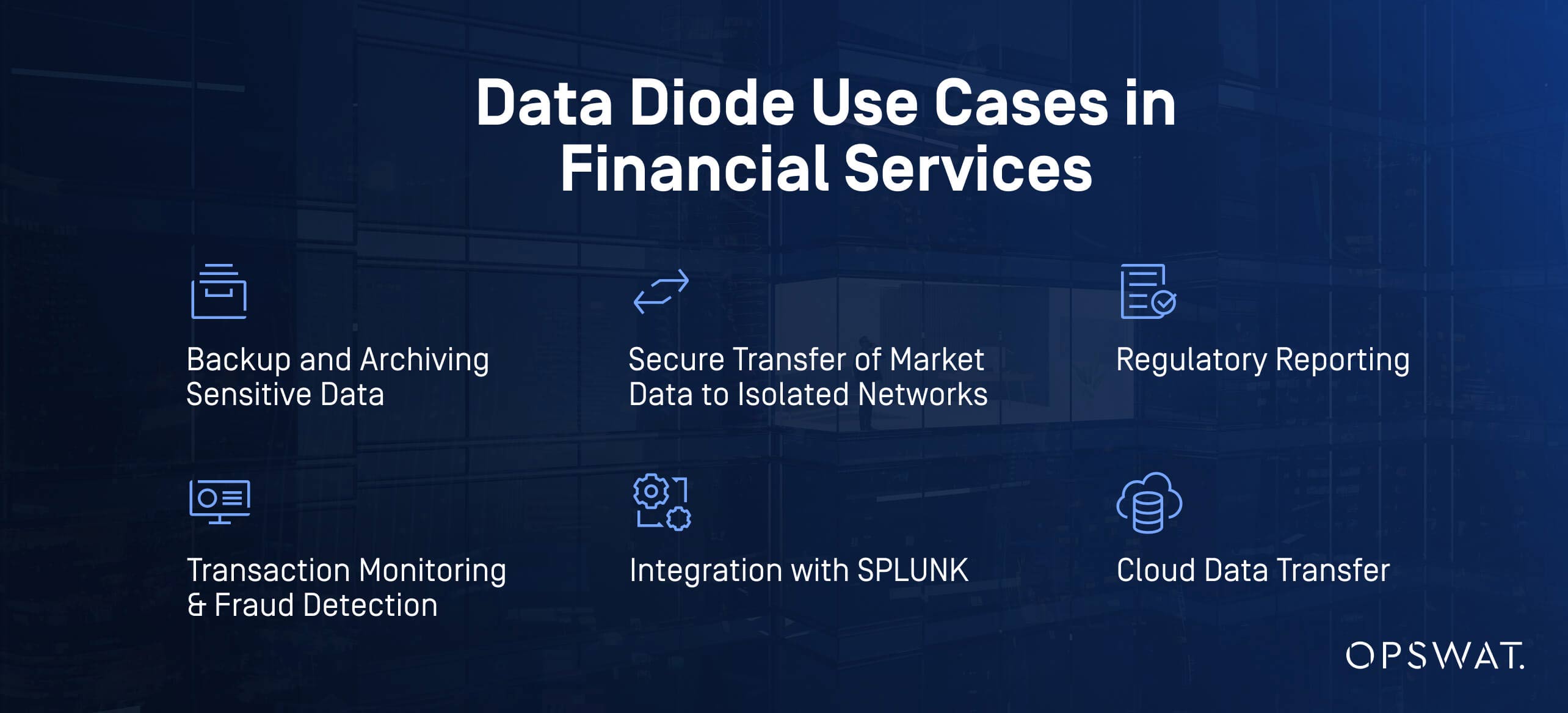It's no secret that cyberthreats against financial institutions are growing more sophisticated. In a 2024 story from the IMF, they showed that losses from cyber incidents quadrupled since 2017, inflating to $2.5 billion.
It’s paramount that cyber defenses must go beyond traditional security measures to protect their critical IT systems. Proper network segmentation is essential to defend critical IT systems from cyberthreats, and data diodes offer greater security than other network security solutions.
Originally developed for military and defense systems, data diodes are finding new relevance in the financial sector, where data integrity, confidentiality, and regulatory compliance are paramount.
Data Diodes, What and Why?
An optical data diode is a hardware enforced, network security device that enforces one-way data flow between two networks. Unlike a firewall or software-based security system, a data diode is engineered to ensure that data can only travel in one direction, eliminating the risk of remote exploitation propagating back to critical IT infrastructure.
The one-way security policy of a data diode is enforced in hardware and cannot be compromised. By creating a one-way communication path, data diodes segregate high-value assets from less secure environments while still enabling critical data transfer.
A second and equally important security benefit of a data diode is the protocol break it enforces between the source and destination networks.
Data diodes were originally designed to meet Department of Defense cross domain communication requirements which includes maintaining complete network confidentiality between the source and destination. Unlike a firewall that opens a TCP or UDP connection between networks, Data Diode’s only transfer the data payload. Proxy software on the source side of the diode strips off routable information in the data packet header and transfers only the payload to the destination side of the diode.
The software on the destination side rebuilds the data packet and through separate provisioning, routes the packet to the correct end point.
Widely deployed to secure classified networks, nuclear power generation infrastructure and many other critical systems, data diodes solidify network segmentation strategy and secures cross network domain communications.
Use Cases in Financial Services
As with other industries, financial services companies have developed complex IT infrastructure to support their business processes, which involve the sharing of data between different departments as well as outside partners and vendors. Often, data sharing is one-way, but the network infrastructure carrying the data is bidirectional, opening potential threat vectors to the organization.
There are many examples where data diodes can be applied to securely share data:

1. Backup and Archiving Sensitive Data
Financial institutions back up data from operational systems to archive facilities in order to ensure business continuity in the event of system failure.
Data Diodes can transfer files, replicate databases and move system event information into an archive facility as well as securely retrieve data from the achieve facility.
2. Secure Transfer of Market Data to Isolated Networks
Trading environments rely on real-time market data feeds from Bloomberg, Reuters and others. This data is a one-way push into typically isolated trading environments.
Data Diodes can be implemented at the network boundary, transferring real time video and other news feeds with minimal latency and without opening a reverse communication channel.
3. Regulatory Reporting
Financial companies submit compliance reports to regulatory agencies from secure environments. This is a one-way push of data that is often sent over a bidirectional network.
Data diodes can be provisioned to automatically send files to the appropriate destination, ensuring sensitive regulatory data is transmitted without risking the integrity of the source environment.
4. Transaction Monitoring & Fraud Detection
Fraud detection systems and departments should be isolated from other banking systems to ensure they can’t be compromised. Transaction logs from banking systems need to be securely transferred to a fraud detection system.
Diodes can transfer transaction logs at high throughput and low latency to fraud detection systems, maintaining required network segmentation and while supporting real-time anomaly detection.
5. Integration with SPLUNK
Financial institutions rely on SPLUNK to monitor, analyze, and visualize large volumes of security and operational data. When logs originate from highly sensitive environments, it’s critical to ensure this information can be exported without introducing risk. Data diodes enable secure one-way transmission of log data into SPLUNK environments, maintaining strict segmentation between critical systems and analysis platforms while supporting real-time visibility and compliance reporting.
6. Cloud Data Transfer
Financial institutions can use data diodes to replicate data to cloud platforms for processing, analysis, or storage, without compromising the security of their internal networks.
Keeping Financial Services Secure
As companies face growing cyberthreats and regulatory pressures, data diodes offer a highly cost effect, robust solution for safeguarding mission-critical systems. By enforcing physical one-way data flows, they provide a level of assurance that software-based solutions alone cannot match.
Discover how data diodes like OPSWAT’s MetaDefender Optical Diode can be applied in financial service infrastructure to enable secure one-way data transfer, isolating sensitive internal systems from external networks while allowing outbound transactional updates and reporting.
Explore how we can help protect valuable information and network infrastructure from cyberthreats and data breaches.

